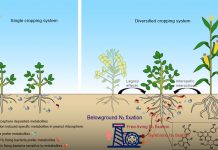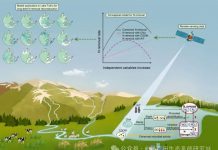Peng Lu Qinfen Li Hongming Liu Zhaozhong Fen Xin Yan Qing Hong Shunpeng Li. Biodegradation of chlorpyrifos and 356-trichloro-2-pyridinol by Cupriavidus sp. DT-1. Bioresource Technology
http://dx.doi.org-10.1016-j.biortech.2012.09.116.
Abstract
A bacterial strain Cupriavidus sp. DT-1 capable of degrading chlorpyrifos and 356-trichloro-2-pyridinol (TCP) and using these compounds as sole carbon source was isolated and characterized. Investigation of the degradation pathway showed that chlorpyrifos was first hydrolyzed to TCP successively dechlorinated to 2-pyridinol and then subjected to the cleavage of the pyridine ring and further degradation. The mpd gene encoding the enzyme responsible for chlorpyrifos hydrolysis to TCP was cloned and expressed in Escherichia coli BL21. Inoculation of chlorpyrifos-contaminated soil with strain DT-1 resulted in a degradation rate of chlorpyrifos and TCP of 100% and 94.3% respectively as compared to a rate of 28.2% and 19.9% in uninoculated soil. This finding suggests that strain DT-1 has potential for use in bioremediation of chlorpyrifos-contaminated environments.







